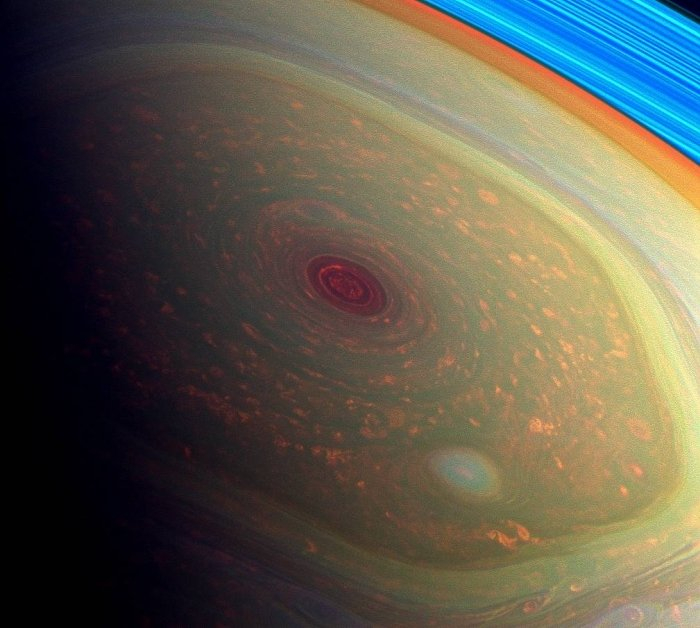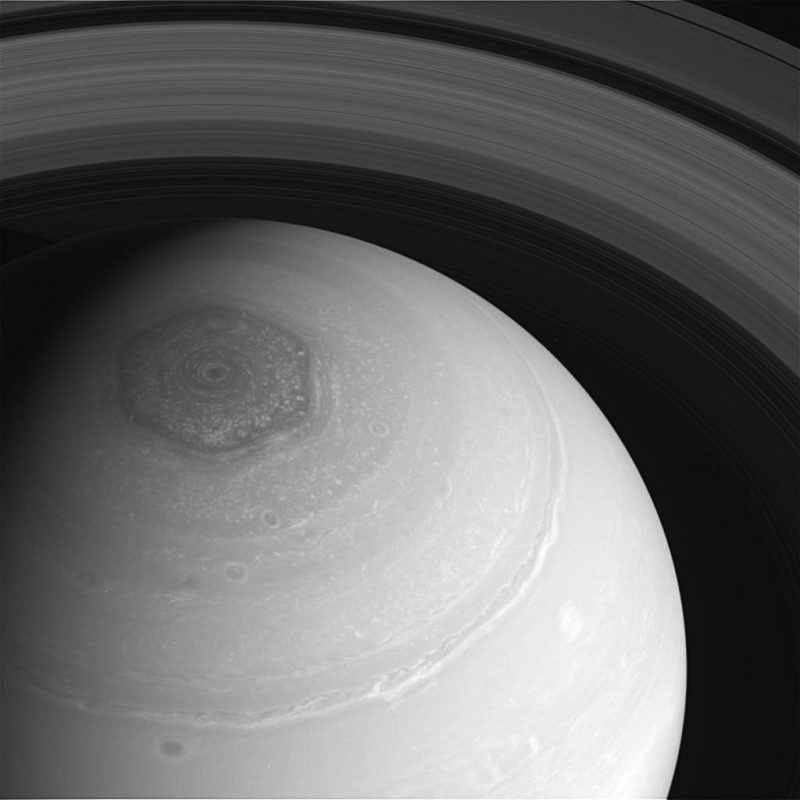Saturn’s Hexagon Storm

Even while all of the outer planets have their own rings, it is Saturn's gorgeous, distinctive rings that have drawn scientists' attention for millennia. But its surface is even more fascinating and mysterious. Saturn, in contrast to Earth, is a gaseous planet that consists primarily of hydrogen, a little bit of helium, and minute amounts of other gases like methane and ammonia.
It would be an understatement to say that Saturn's surface is busy because it is the site of a wide variety of weather occurrences that we have never been able to fully understand. However, a hexagon-shaped storm at its north pole is by far the most bizarre. It was first discovered by the Voyager spacecraft in the early 1980s, and all we truly know about it is that it is roughly the size of two Earths. We don't even know how long it's been active, given we've never seen a non-circular, polygon-shaped storm anywhere else in the Solar System.











